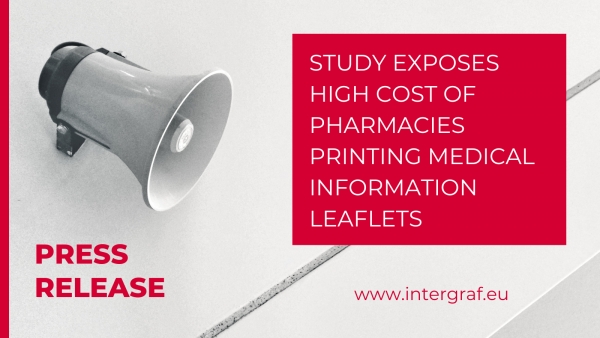January 2022

Study finds 28% lift in sales and 600% ROI by adding print catalogues
In a large-scale field study conducted by Harvard Business Review, a luxury e-commerce retailer found that by adding print catalogues, it increased sales by 28% and inquiries by 77%. It also yielded a direct ROI of 600%.
By Heidi Tolliver-Walker
Did you see the eMarketer article on the comeback of print catalogues? Maybe if it weren't a digital publication, it wouldn't have stuck out to me so much. But to hear eMarketer praise the value of print catalogues was kind of fun. Then there was the fact that I received a direct mail piece from Google the same day. That was fun, too.
These experiences got me thinking about the current data set on the power of catalogues, especially among companies that are 100% online. (Check out this interesting list from Modern Fellows of 46 online retailers, including Amazon, that are now marketing using print catalogues.) Most of the data-and it's good data, don't get me wrong-that I find is older. What has there been recently that is new? That sent me searching for more current research, especially that showed not just that catalogues work, but by how much.
That's why I got excited when I found this study reported by Harvard Business Review. It was a large-scale field experiment conducted in 2020 with a luxury jewellery e-commerce retailer with no physical store. The company has $60 million in annual revenue, with an operating profit of $12 million and a database of approximately 28,000 customers. (It acquires customers primarily through online search and other online platforms.) The study was designed to discover, not just whether people read catalogues, because we have tons of data that they do, but how much a catalogue directly impacts sales.
Here's how the experiment worked: On HBR's recommendation, the retailer launched a new, bi-monthly catalogue featuring "professional and artistically rendered product photography with high-quality printing." The company then randomly selected 30% of its U.S.-based customers for the experiment. Of those...
- 5% received neither email nor catalogues for six months (the control group),
- 55% received a weekly marketing email, and
- 40% received the new bi-monthly catalogues in addition to the weekly email marketing.
To control for the effects of content, more than 90% of the products were the same between the emails and the print catalogues. The same sets of photos and descriptions were also used in both. The research team then tracked purchases and product inquiries across all three groups.
The results?
- The retailer saw a 15% lift in sales and a 27% lift in inquiries from the email + catalogue group compared to the "email only" group.
- It saw a 28% increase in sales and 77% lift in inquiries from the "email only" group over the control group, but a 49% lift in sales and 125% lift in inquiries from the email + catalogue group over the control.
- Based on follow-up surveys, HBR ascertained that more than 90% of the customers had browsed through the catalogues and kept those catalogues for an average of seven days. It also found that, when the print catalogue was added to the mix, order sizes increased by 15%.
According to the report:
"A quick ROI calculation indicates that a 15% increase in sales on an average order size of $6,700 due to the catalogue campaign, at approximately 30% gross margin, translates to an additional $90 profit (or $180 additional annual profit) per customer. The average cost of the mailing with front-end design cost factored in is $5, yielding a direct ROI of 600%, not to mention the additional customer engagement from increased inquiries. If this campaign [were to be] instituted across the entire customer base, similar response rates would result in an incremental annual profit of over $5 million, a boost of 40% from its current profit level."
Just by adding catalogues! But why? HBR attributes these results to what it calls "vividness," or the experiential influence on purchases. To test its theory, it surveyed 500 random customers from each of the "email only" and "email + catalogues" groups and asked about their perceived vividness of each marketing contact. It asked, "How easy it is for you to imagine wearing the product?" and "How vivid are the product descriptions in the email (or catalogue)?" Respondents were asked to rank their answers on a seven-point scale. Those in the "email only" group gave an average rating of 4.3, while those in the "email + catalogue" group gave a rating of 5.6. The difference between the two was statistically significant. Thus, the results of this field experiment provide evidence that catalogues can increase sales by enhancing product vividness and by helping customers imagine themselves using those products.
HBR notes that, while there are many benefits to catalogues, including staying power and maintaining top of mind, catalogues' real power is "how-for certain products-they increase the vividness of a product by enhancing consumer's ability to visualize and imagine product usage experiences. Vividness is highly influential in consumer behaviour as it can increase consumer involvement and joy in the purchasing process, ultimately influencing preferences and sales."
Catalogues, it further explained, are more likely to work for products that are "hedonistic," or purchased for fun, enjoyment and pleasure rather than for utilitarian purposes. In other words, jewellery over stoves, vacations over roof replacements. Catalogues are also more likely to work for products that contain richer experiential aspects:
"The psychological theory of vividness suggests that visually rich categories such as luxury goods are more responsive to vividness, and utilitarian and functional products such as household tools, cleaning products, and home security systems would not benefit from catalogues. Just like the evolution of the retail landscape, catalogues have also evolved-they should no longer be a rambling collection of product pages reminiscent of Sears' golden days. Instead, firms need to focus on...creative presentation of products to evoke emotion...and narrating the experiences of others so that consumers can almost live vicariously through [them]."
This analysis not only provides research support for the revenue-building value of catalogues, but also which types of products for which they are most valuable. Got ideas churning? Great! That's the point.
About Heidi Tolliver-Walker
Heidi Tolliver-Walker is former print industry magazine editor and long-time industry analyst, content developer, author, and blogger. She has written for the industry's top publications, research companies, and private companies for the past three decades - so long that she still has an AOL address, which she signed up for back when AOL was still cool. You can reach her at [email protected].
Attribution:
This originally appeared on WhatTheyThink. Copyright © 2022 WhatTheyThink. All rights reserved. Reprinted with permission. WhatTheyThink is the global printing industry's leading independent media organization with both print and digital offerings, including WhatTheyThink.com, PrintingNews.com and WhatTheyThink magazine versioned with a Printing News and Wide-Format & Signage edition. Our mission is to provide cogent news and analysis about trends, technologies, operations, and events in all the markets that comprise today's printing and sign industries including commercial, in-plant, mailing, finishing, sign, display, textile, industrial, finishing, labels, packaging, marketing technology, software and workflow.
Downloads
 Intergraf Economic News (Paper Prices) - March 2024
Intergraf Economic News (Paper Prices) - March 2024
March 2024
Access the latest edition of the Economic Newsletter for the European Printing Industry for data on paper consumption, and pricing data for pulp, paper and recovered paper. Data for packaging papers and board is also available with this edition.
 STUDY EXPOSES HIGH COST OF PHARMACIES PRINTING MEDICAL INFORMATION LEAFLETS
STUDY EXPOSES HIGH COST OF PHARMACIES PRINTING MEDICAL INFORMATION LEAFLETS
March 2024
Intergraf welcomes the release of a study by our partner MLPS (Medical Leaflet = Patient Safety), a subgroup of the European Carton Manufacturers Association (ECMA) shedding light on the potential economic costs associated with the proposed use of Print on Demand (PoD) leaflets in the pharmaceutical legislation revision.










